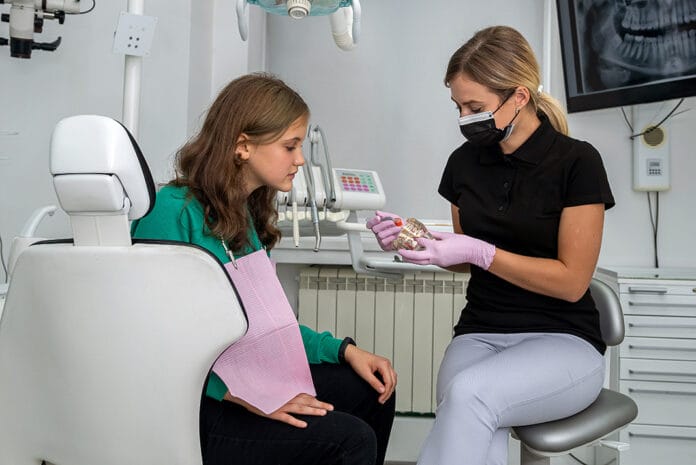Many healthy behavior models and theories are available, but the Stages of Change Model, also known as the Transtheoretical Model (TTM), is one that clearly breaks down where a dental patient is in their readiness to change behavior.
Part of the Stages of Change model involves assessing someone (in this case, your dental patients). Individual awareness and decision making are also involved. Some common uses for this model are smoking cessation or increasing physical activity.
In the dental profession, unhealthy behaviors that we observe are poor homecare habits (not regularly brushing or cleaning interdentally), consuming large amounts of sugar (poor diet), smoking, and not following up with recall appointments.
The Stages of Change Model is broken down into six stages. The six stages are precontemplation, contemplation, preparation, action, maintenance, and termination.
Precontemplation – This is when the individual or group of people is either unaware that their behavior is unhealthy (or negative) or not ready to change.
Contemplation – This stage involves having more awareness that behavior is harmful and understanding the pros and cons of changing behavior.
Many patients fall in these two stages. Either they do not know that they are at risk or present with an unhealthy oral condition such as active periodontal disease. Other patients have had their dental hygienist educate them on oral health status and really do not seem to care to change or are unsure about changing.
Individuals in the precontemplation stage are not ready to change. You can continue to educate them (giving them handouts, sharing videos, showing their assessments such as radiographs or periodontal charting comparisons), and be patient with them. For those in the contemplation stage, discuss the pros and cons of changing and give them tons of support.
Preparation – During this stage, the individual starts to create a plan for changing. They are collecting necessary resources to be successful and removing saboteurs (or triggers) that may hinder the behavior change. This is the best time to start mapping out a clear plan for your patient during oral hygiene instruction.
Recommend products and homecare techniques that are customized just for them. Do they need an electric toothbrush or specific interdental cleaner? How will they reduce the consumption of sugary foods and drinks? Are they sipping coffee with a lot of sugars all day? If they are missing appointments, is there a better time in the day they can visit? Do they need to have a more frequent recall to help improve deposit buildup or reduce pocketing?
Action − The actual implementation of the plan is part of the action stage. This is where your patient should have already received or bought the recommended homecare products and made their next dental hygiene appointment. Here, they should have also started performing recommended oral hygiene behaviors at home, such as brushing with their electric toothbrush twice a day and cleaning interdentally once a day.
Maintenance – In the dental setting, this is when the individual has followed through with the created plan for over six months without a relapse. When your patient is in this stage, you should notice improvements such as fewer deposits, pocket depths may be improving, reduction in bleeding or inflammation, they haven’t missed a recall appointment, or they haven’t had any signs of caries.
Relapse may occur at any stage, but it is commonly seen during the maintenance stage. Relapse is when the individual falls back into an unhealthy behavior. If they did relapse, determine along with them about why the relapse occurred. During this reassessment or reevaluation, make needed adjustments to help reduce the risk of relapsing again.
Termination – This is when the individual is at no risk of relapsing or wanting to go back to a behavior. Termination is a very rare occurrence. I believe in dentistry, this may take a long period of time to achieve on a case by case basis or may never occur.
Having a better understanding of your patient’s behavior stage allows you to give better overall care.












